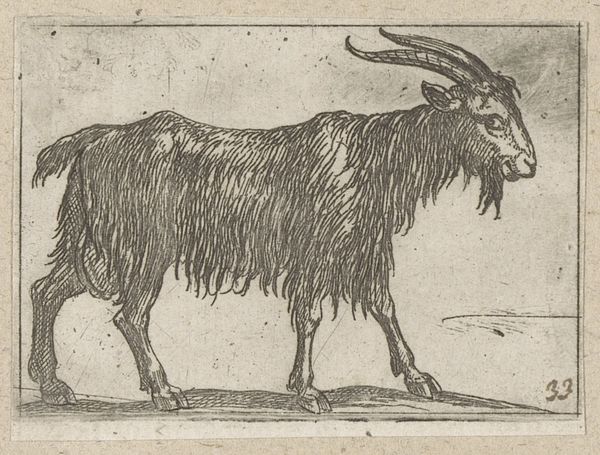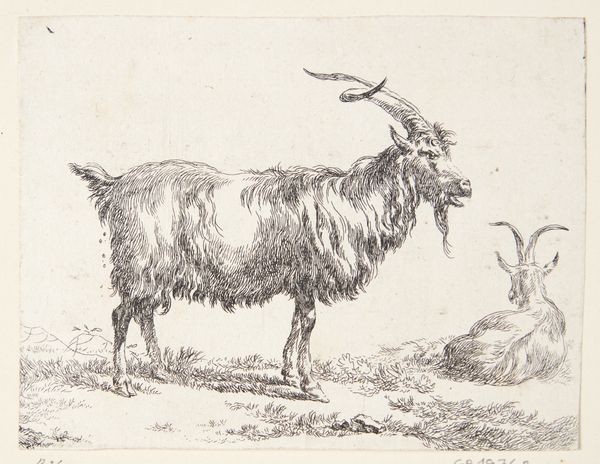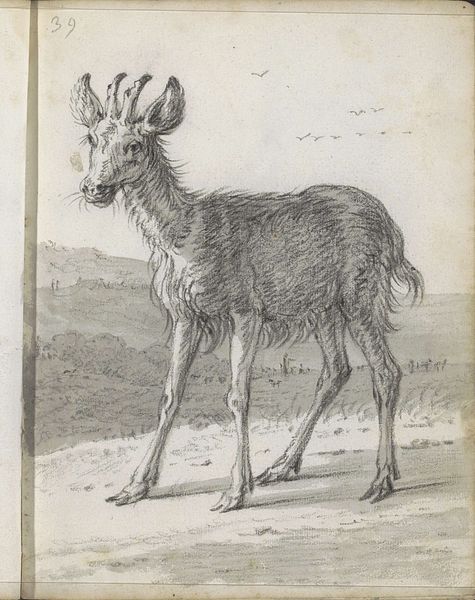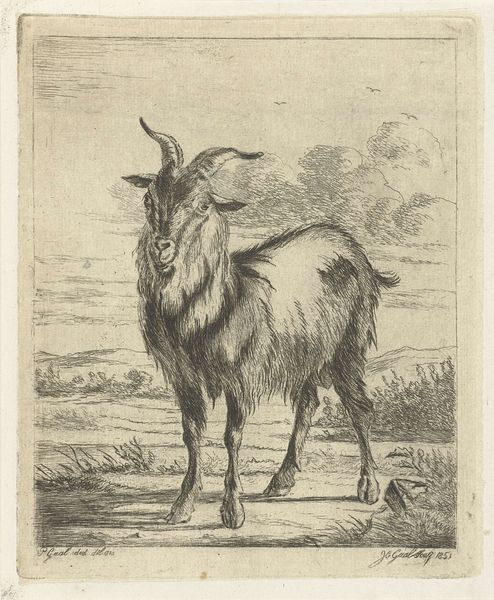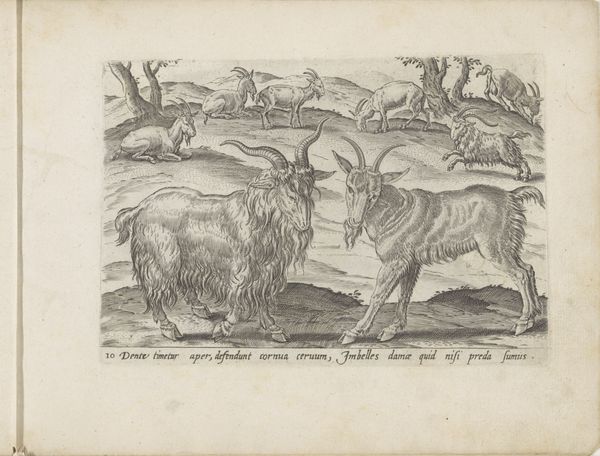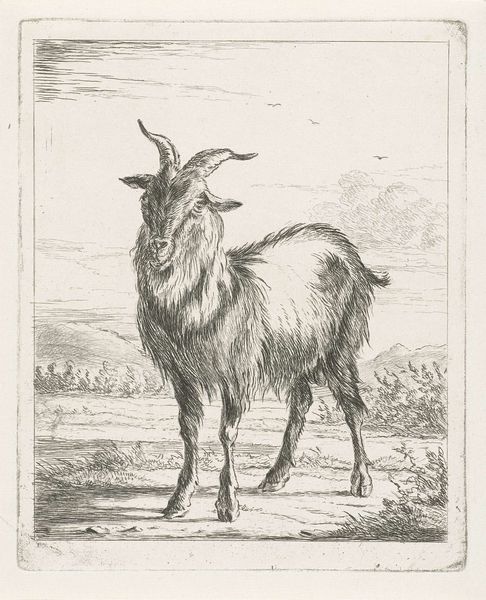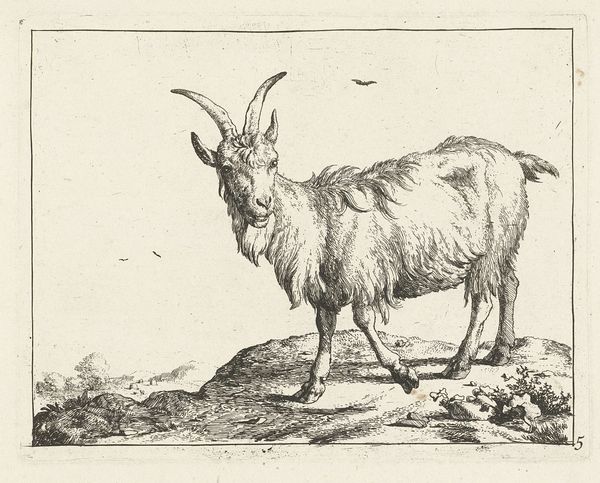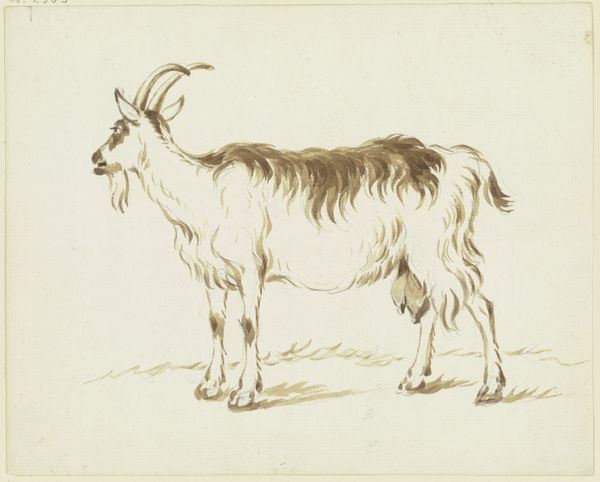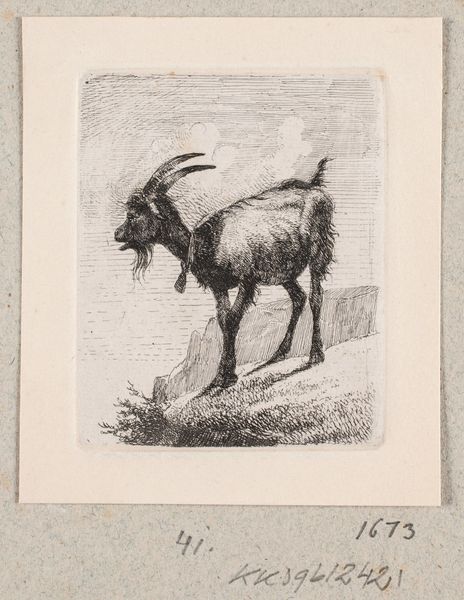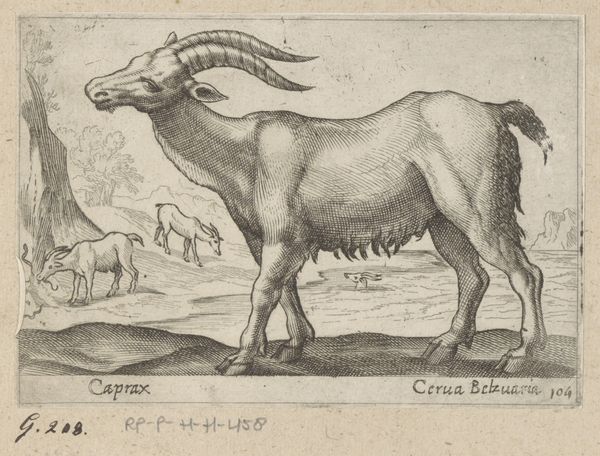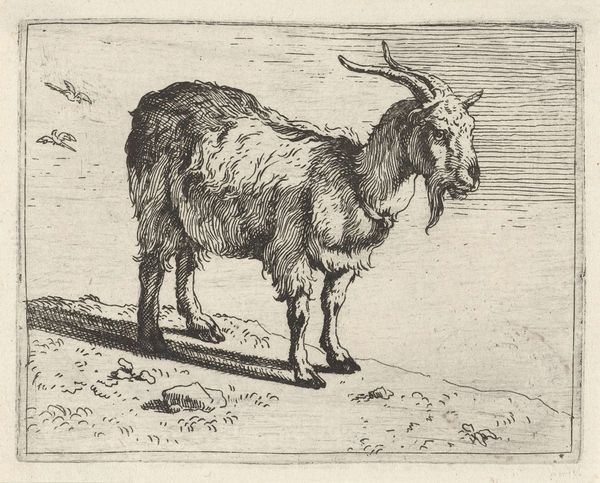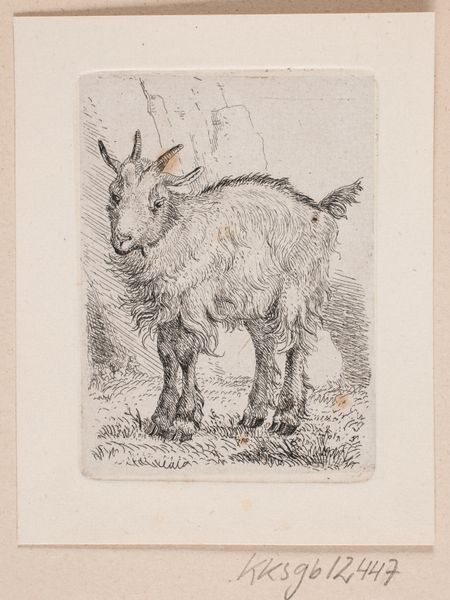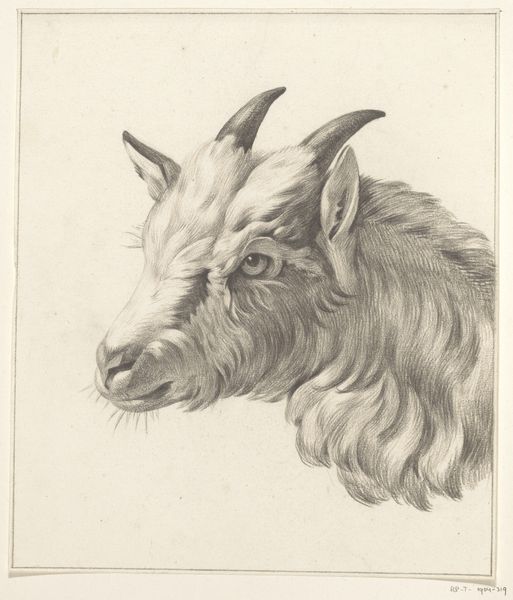
drawing, coloured-pencil
#
portrait
#
drawing
#
coloured-pencil
#
landscape
#
coloured pencil
#
watercolour illustration
#
watercolor
#
realism
Dimensions: height 430 mm, width 270 mm
Copyright: Rijks Museum: Open Domain
Editor: So, this drawing is called *Geit (Capra hircus)*, created between 1790 and 1814 by J. Verbrugghe, using coloured pencil. It has a sort of scientific illustration vibe about it, like a page from an old bestiary. I wonder, looking at this artwork, how does the socio-cultural context inform such a seemingly straightforward depiction? Curator: That's a keen observation! These kinds of illustrations were often commissioned during the Enlightenment, weren't they? Think about the Linnaean system of classification taking hold. This image participated in that, aiming for objective visual recording but inherently shaped by the societal drive to categorize and control the natural world. Consider how this was later utilized in expanding colonial enterprises, the systematic classification of flora and fauna acting as an assertion of dominance. What do you think that implies? Editor: It gives a rather colonial context to something as benign-seeming as a picture of a goat. The portrait aspect suggests a unique specimen worthy of documentation, linking scientific endeavor with potential economic or imperial interests? Curator: Precisely. Now, look at the landscape – what does that background signify for you within this system? Editor: Well, it's quite minimal isn’t it, suggesting this piece prioritizes observation over artistic composition. Perhaps the landscape isn't even important? Curator: Possibly, it also reflects broader aesthetic values prevalent in that era, right? Realism, not just an objective representation of a goat but one that fit established ideas of order and place. This image participated in the cultural production of scientific knowledge that both reflected and reinforced specific power structures of the time. It is all intrinsically interlinked. Editor: Wow, it’s more than just a goat picture then. That sheds new light on how to consider the purpose of similar illustrations moving forward! Curator: Indeed! Now when you look at any similar scientific image you can’t help but analyze it with a different historical lens, considering social factors like colonization and expanding industry, too!
Comments
No comments
Be the first to comment and join the conversation on the ultimate creative platform.
